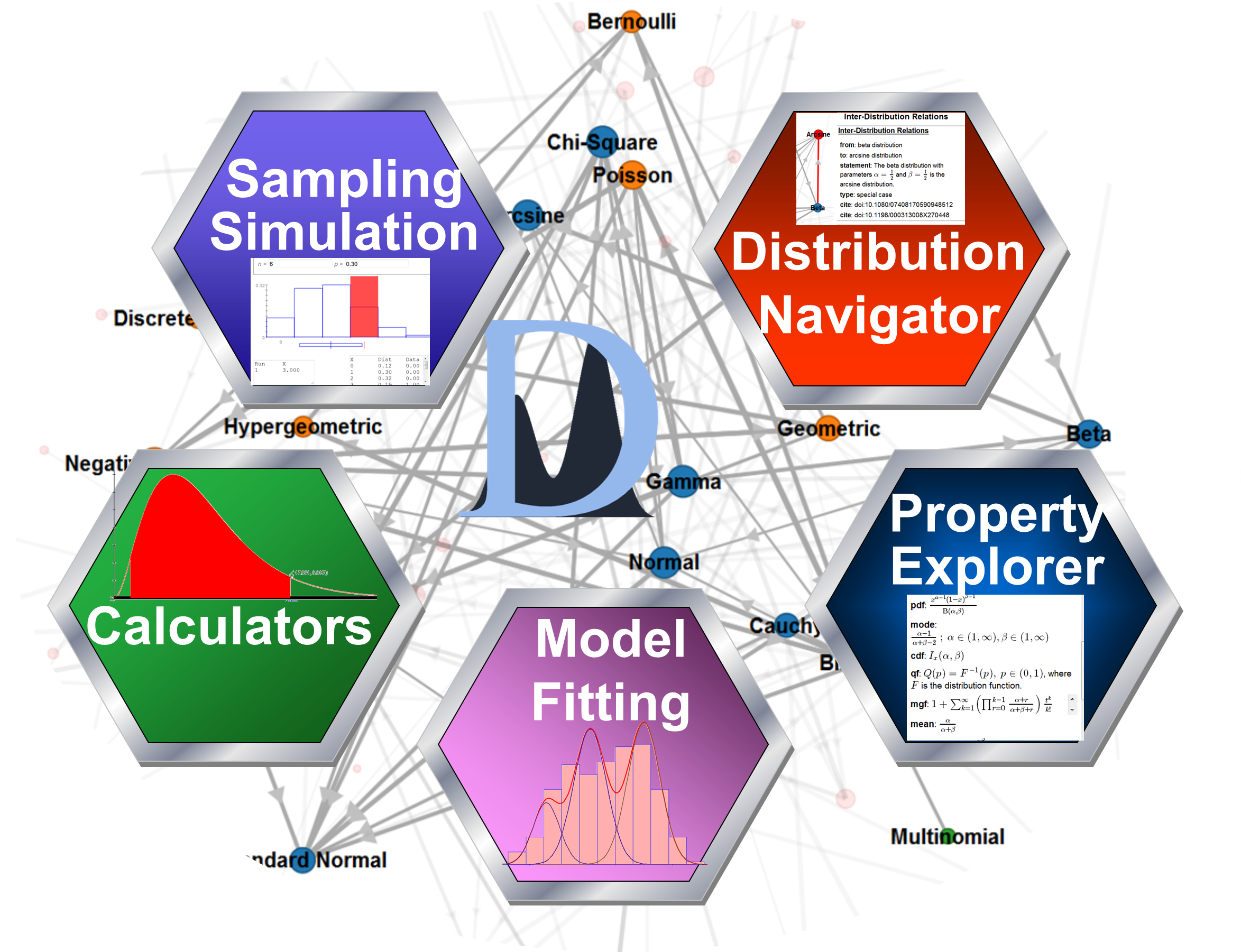- Visually traversal of the space of all well-defined (named) distributions;
- Exploration of the interrelationships between different distributions;
- Distribution search by keyword, property and type;
- Retrieval of qualitative (e.g., analytic form of density function) and quantitative (e.g., critical and probability values) information about each distribution;
- Discovery of references and additional distribution resources.
- Interactive utilization of various probability distribution calculators, simulators and experiments.
Distributome
Tools Carousel Homicides
Trend Activity Solutions Blog
Game
Blog Posting official
Navigator version Activities
Colorblindness
Activity Solutions Updates
and Dynamic Distribution Name-to-Resource Mapping Distributome
Game Update calculators
PIs
Tech
Docs simulators
Navigator
Current
Meta-Data (CSV) Navigator
V3
documentation is available here Webapps
Distributome
Blog posting experiments
Uncategorized
New
Distributome Game (Game 2) Events
Distributome
XML Database: Types of distributions/nodes and relations/edges Game
Webapp
